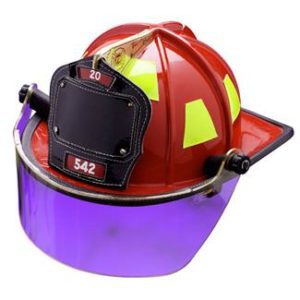
Smoke Alarms Facts
– Smoke alarms cut the risk of dying in a reported fire in half.
– Most homes (96%) have at least one smoke alarm (according to a 2008 telephone survey.)
– Overall, three-quarters of all U.S. homes have at least one working smoke alarm.
– Each year, nearly 3,000 people die in U.S. home fires.
– In 2003-2006, roughly two-thirds of home fire deaths resulted from home fires in homes with no smoke alarms or no working smoke alarms.
– In more than half of the reported home fires in which the smoke alarms were present but did not operate even though the fire was large enough, batteries were missing or disconnected.
– More than half of the smoke alarms found in reported fires and two-thirds of the alarms found in homes with fire deaths were powered by battery only.
– Most homes still have smoke alarms powered by battery only.
– In a 2008 telephone survey, only 12% knew that smoke alarms should be replaced every 10 years.
– In fires considered large enough to activate a smoke alarm, hard-wired alarms operated 91% of the time; battery-powered smoke alarms operated 75% of the time.
– Interconnected smoke alarms on all floors increase safety. In a U.S. Consumer Product Safety Commission (CPSC) survey of households with any fires, interconnected smoke alarms were more likely to operate and alert occupants to a fire.
Smoke Alarm Safety tips
– Install smoke alarms in every bedroom, outside each separate sleeping area and on every level of the home, including the basement. Interconnect all smoke alarms throughout the home. When one sounds, they all sound.
– Ionization smoke alarm is generally more responsive to flaming fires, and a photoelectric smoke alarm is generally more responsive to smoldering fires. For the best protection, both types of alarms or a combination alarm (photoelectric and ionization) should be installed in homes.
– Test alarms at least monthly by pushing the test button.
– Smoke rises; install smoke alarms following manufacturer’s instructions high on a wall or on a ceiling. Save manufacturer’s instructions for testing and maintenance.
– Replace batteries in all smoke alarms at least once a year. If an alarm “chirps”, warning the battery is low, replace the battery right away.
– Replace all smoke alarms, including alarms that use 10-year batteries and hard-wired alarms, when they are 10 year old or sooner if they do not respond properly.
– Be sure the smoke alarm has the label of a recognized testing laboratory.
– Alarms that are hard-wired (and include battery backup) must be installed by a qualified electrician.
– If cooking fumes or steam sets off nuisance alarms, replace the alarm with an alarm that has a “hush” button. A “hush” button will reduce the alarm’s sensitivity for a short period of time.
– An ionization alarm with a hush button or a photoelectric alarm should be used if the alarm is within 20 feet of a cooking appliance.
– Smoke alarms that include a recordable voice announcement in addition to the usual alarm sound, may be helpful in waking children through the use of a familiar voice.
– Smoke alarms are available for people who are deaf or harding of hearing. These devices use strobe lights. Vibration devices can be added to these alarms
– Smoke alarms are an important part of a home fire escape plan.
Don’t Risk A Lot for a Little
Smoke alarms are a perfect example of how to “Reduce” risk. Don’t risk a lot for a little and take 10 minutes to make sure your home is properly protected.
Reproduced from NFPA’s Fire Prevention Week Web site, www.firepreventionweek.org ©2010 NFPA
